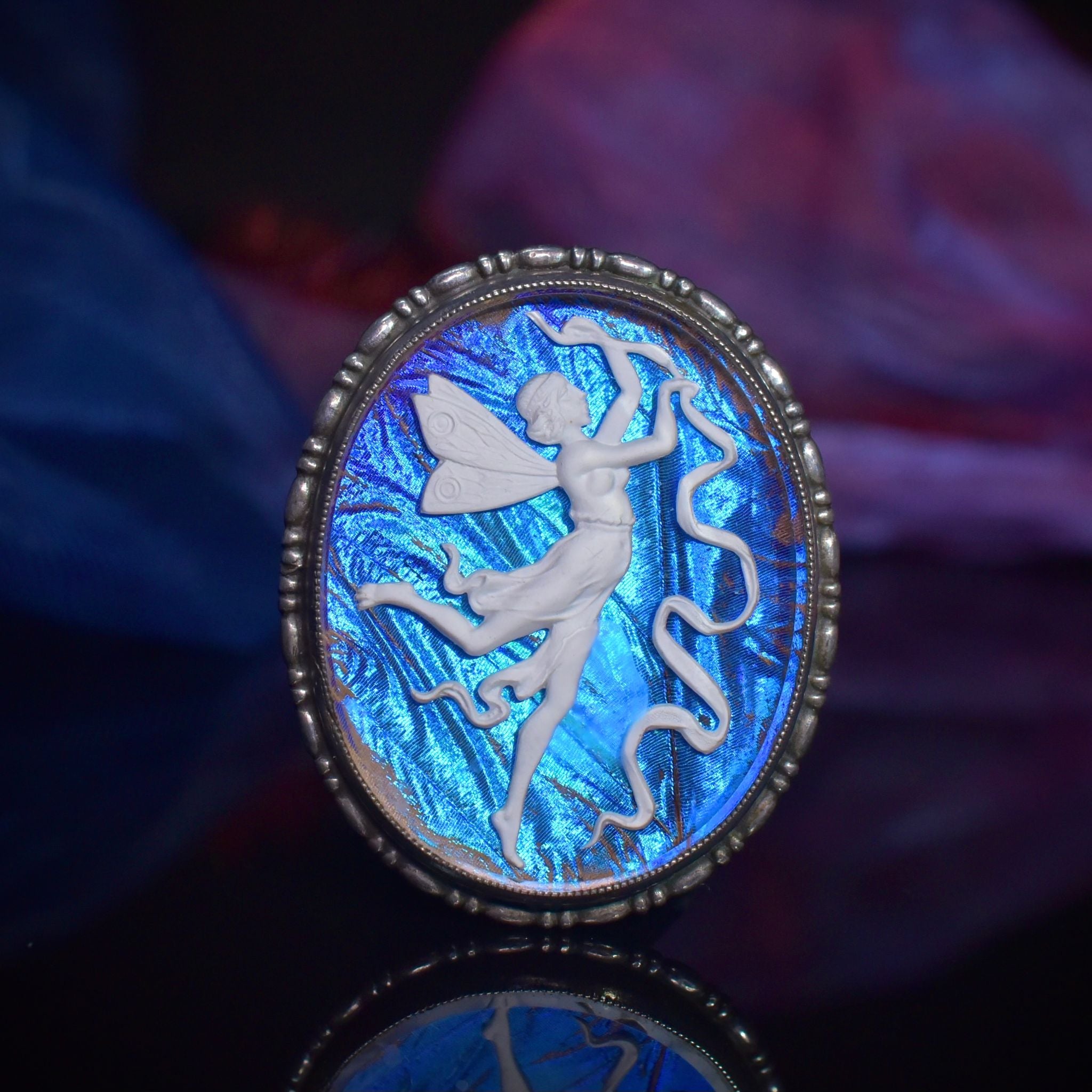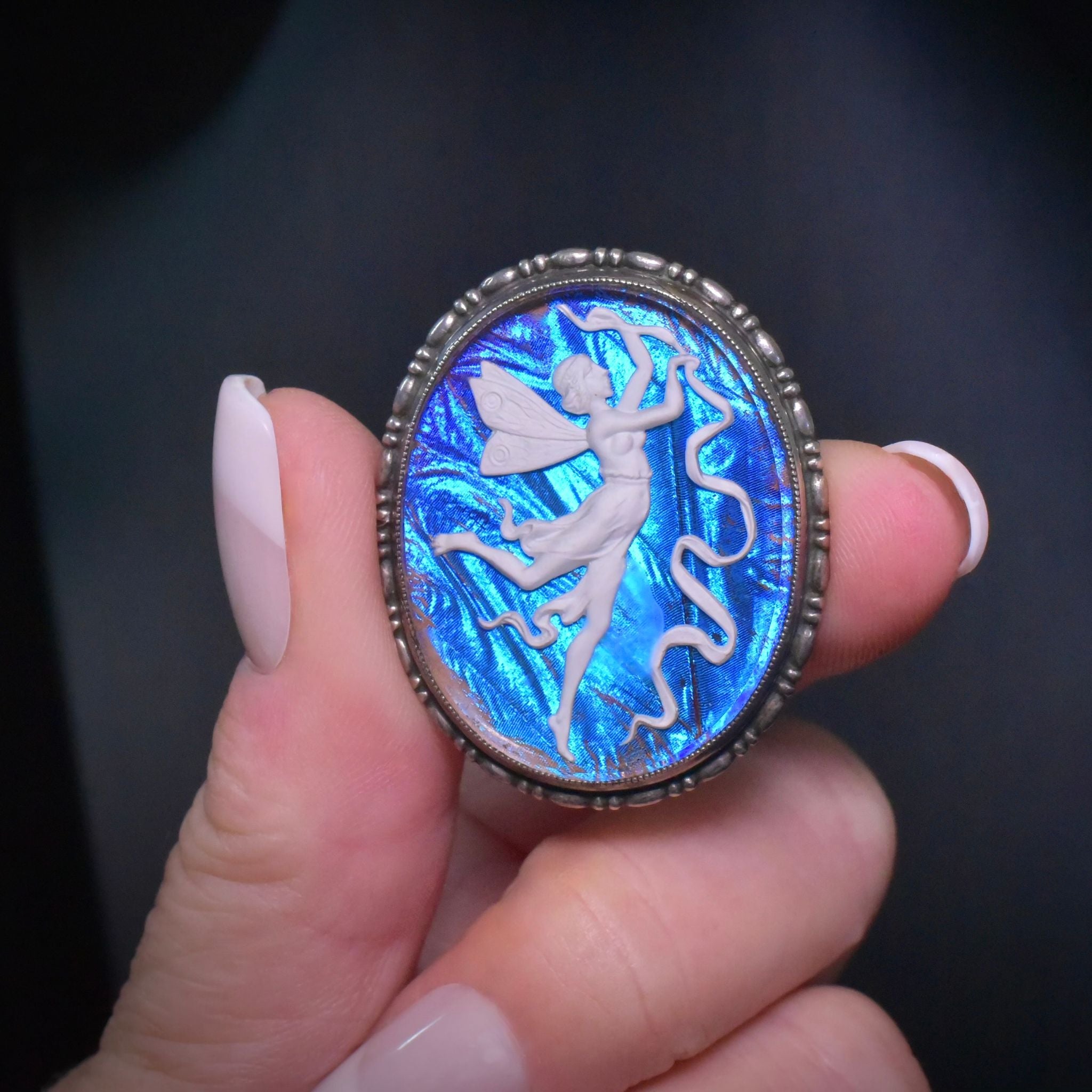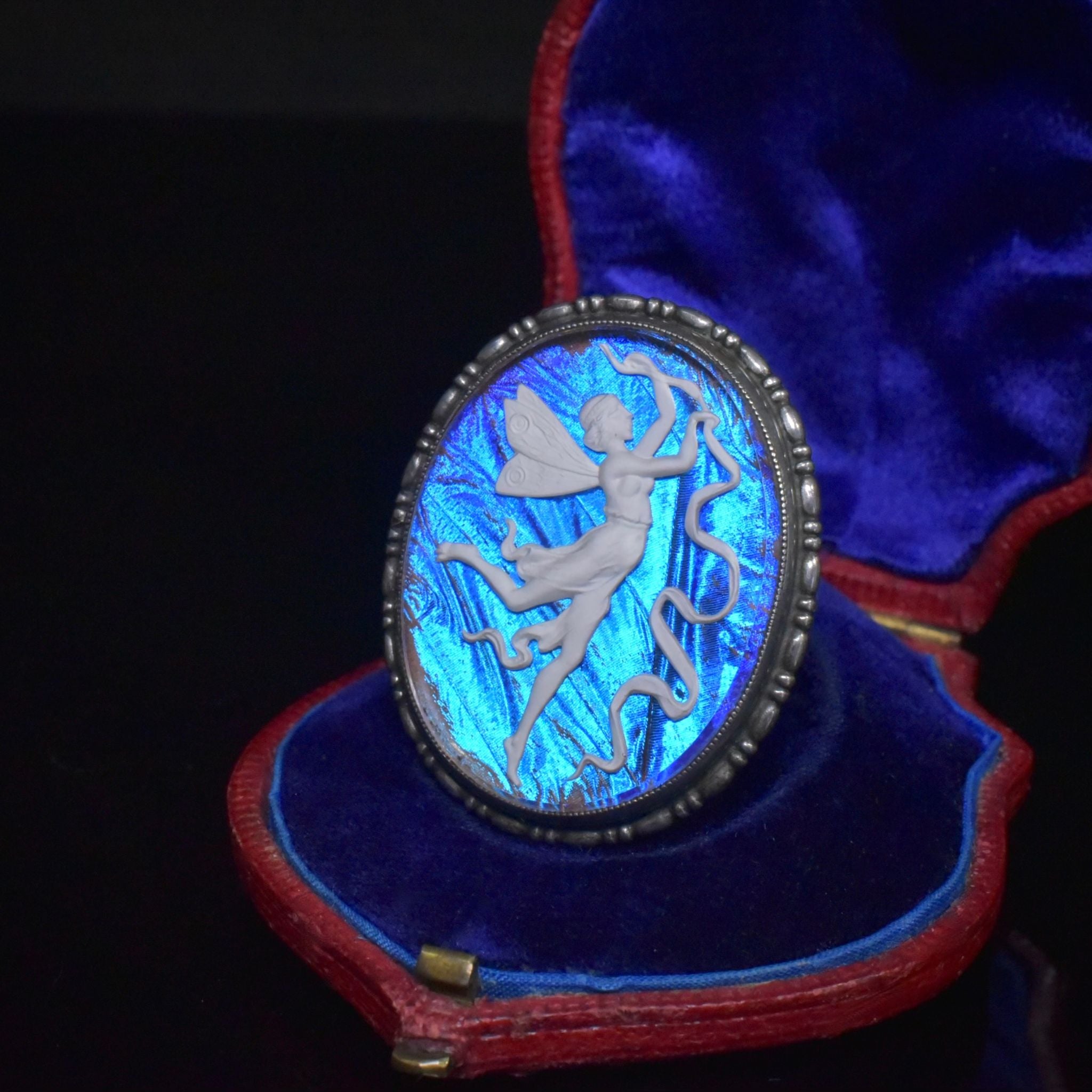



Antique Art Nouveau Morpho Butterfly Wing Sulfide Cameo Sterling Silver Brooch Circa 1910-15
Please note, boxes are for display only unless otherwise stated.
A marvelous piece of highly collectible Art Nouveau jewellery dating to 1910-15, simply perfect for the Fairy, Butterfly or Art Nouveau collector.
Crafted from Sterling silver, English in origin, and featuring the most exquisite, ribbon twirling, winged Fairy cameo crafted from what is known as a Sulphide cameo**.
This intricately carved cameo is set upon genuine butterfly wing from the Morpho Butterfly which glows and shimmers in stark contrast with the bright white of the dancing Fairy!
A large piece measuring 3.7cm x 3.0cm, in excellent original condition throughout, this piece look fabulous pinned to any ensemble and receives dozens of compliments whenever she it seen.
STONES
None
Sulphide carved cameo**
Morpho Butterfly wing
MEASUREMENTS
3.7cm x 3.0cm
WEIGHT
9.68 Grams
ERA
Art Nouveau - 1890-1915
MARKS
“Genuine Butterfly Wings Sterling Silver”
CONDITION
Very good to excellent antique condition. Butterfly wing is just lovely, iridescent and vibrant. No chips or damages to glass window, minor marks only. ‘C’ clasp and pin to verso are original, and in excellent functional working order. Patina to silver only, we have chosen not to over clan this one to retain its lovely antique vibe. No issues to note. A must for the Art nouveau, Butterfly and Fairy lovers!
WHAT IS SULPHIDE CAMEOS
Sulphides, also known as cameo incrustations, were pioneered by Apsley Pellatt in 1819 when he patented the process of encasing a medallion in glass.
These decorative objects feature a figurine or medallion, typically white or pale grey, embedded in clear glass, commonly found in decanters, jugs, bottles, tumblers, and occasionally jewellery.
Pellatt named the technique "Crystallo-Ceramie" and authored several books on it during the early 19th century. The term "sulphide" derives from the production method, which involves mixing sulphur with clay or glass paste before encasing it in a molten glass bubble and removing the air.
Laybys & Hold Policy
Do you have your eye on a fabulous piece but need some extra time to
pay? At Graisons, we offer suitable layby terms for pieces priced $400 AUD and above. Contact us for more details.
Purchase Guide & Refund Policy
For information regarding our Purchase Guide & Returns Policy, please click here
Shipping & Delivery
Free Complimentary Express Shipping: Australia & Select International Countries.
We are pleased to offer free complimentary express postage, fully insured with tracking and signature on delivery using Australia Post.
Orders are dispatched within one-two business days of purchase. Once complete, a tracking number will be forwarded to you via email notification.
We are currently shipping to the following international countries:
UK, USA, CANADA, SINGAPORE, NEW ZEALAND, HONG KONG.
PLEASE NOTE: Any duties imposed by countries for importing our items are the buyers responsibility. Please contact your local customs agency if you wish to discuss potential rates and fees.
Caring For Antique & Vintage Jewellery
We absolutely pride ourselves on sourcing the best quality pieces for our customers, with many of our items valued by our registered jeweller/gemologist.
Our collection consists of pieces that are of antique and vintage condition, which means that all our items are secondhand and used. Customers are not purchasing 'new', 'perfect' and 'unworn items', and as such, should expect wear and imperfection. Any condition issues are always extensively mentioned in the condition summary.
Please do not hesitate to ask questions prior to purchase. It is the responsibility of the purchaser to ensure that these descriptions and pictures are carefully viewed and any questions are asked prior to the transaction taking place.
Please refer to our guide, Caring For Antique & Vintage Jewellery for more details.
Your Purchase: What Is Included?
Your purchase will be lovingly packaged in our custom made, eco-friendly Graisons Fine Jewellery Jewel box tied with ribbon inside our custom made packaging/mailing box.
For added safety and security, all purchases are shipped inside an Australia Post medium sized mailing box.
If your item includes an independent valuation, the physical certificate will be included.
Choose options



